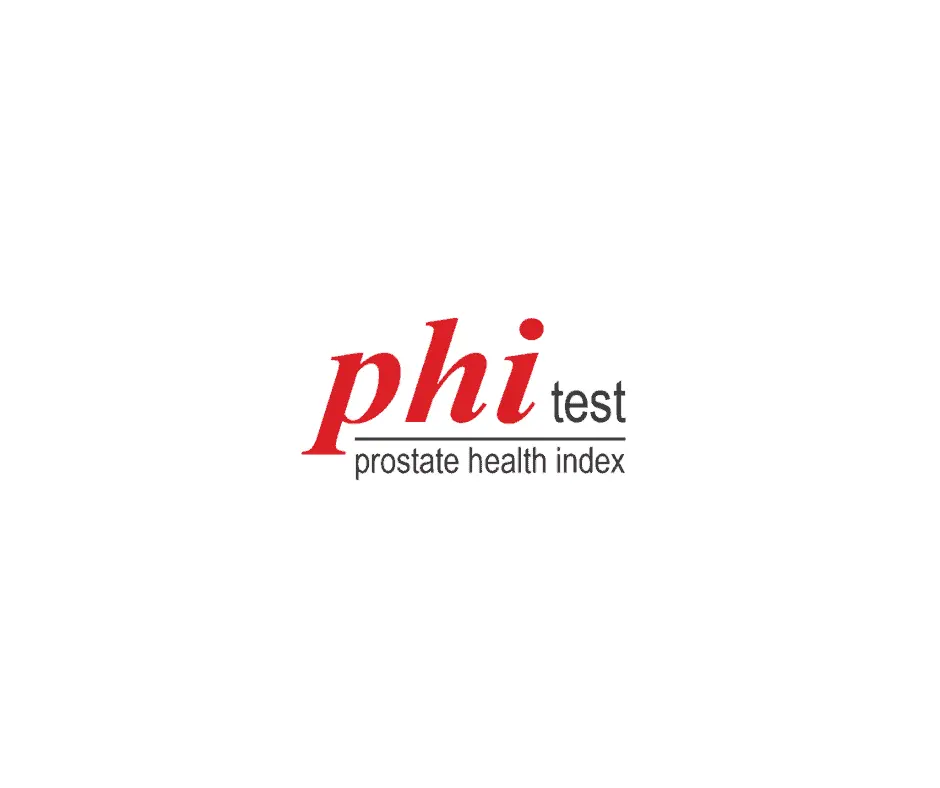Prostate Health Index | What PHI Score Means
- James Dickson

- Jun 28
- 4 min read
Updated: Sep 12
Early detection saves lives, yet the traditional PSA blood test too often leaves men in diagnostic limbo. That’s why top urologists now add the prostate health index (PHI) to the work-up when PSA is borderline or mildly raised.
Below you’ll find a plain-English guide to what the prostate health index measures, how the score is calculated and—most importantly—how it helps doctors decide who really needs a biopsy.
Before we go any further, if you want a healthy prostate and to reduce your risk of prostate cancer, this supplement works wonders (and it's currently discounted with free global shipping!)

Quick facts at a glance
Key point | Detail |
What it is | A blood test that combines total PSA, free PSA and the cancer-associated [-2]proPSA isoform into a single number (the PHI score). |
Regulatory status | FDA-approved (2012) as an aid to distinguish prostate cancer from benign conditions. |
Clinical guidelines | NCCN Early Detection Guidelines 2025 list PHI among recommended reflex tests for men with PSA 2–10 ng/mL.nccn.orgeducation.nccn.org |
Main benefit | Reduces unnecessary biopsies while catching more clinically significant cancers than PSA alone. |
Typical cut-offs | PHI < 25 = low risk; 25–35 = moderate; >35 = higher likelihood of cancer. Exact thresholds vary by lab and age. |
How the prostate health index works
The test starts with a standard blood test. The lab measures:
Total PSA (tPSA)
Free PSA (fPSA)
[-2]proPSA – a PSA sub-fragment linked to malignant cells.
The analyser then runs the simple formula:
([-2]proPSA ÷ free PSA) × √(total PSA) = PHI score
Higher [-2]proPSA and lower free PSA push the score upward, signalling a higher chance that the PSA rise comes from cancer rather than an enlarged or inflamed gland.
Why experts prefer PHI over PSA alone
1. Fewer needless biopsies
A 2016 health-economics review showed PHI could cut negative biopsies by up to 36 percent without missing aggressive tumours.
2. Better discrimination of aggressive disease
A 2022 meta-analysis confirmed the prostate health index outperforms PSA in spotting clinically significant cancers (Gleason ≥ 7). degruyterbrill.com
3. Backed by major guidelines
The 2025 NCCN Early Detection update lists PHI alongside MRI and prostate cancer risk calculators for men with equivocal PSA results.
4. Integrates easily into existing workflows
No extra visit or imaging is required. The same blood sample yields both PSA and PHI, saving time and cost versus immediate MRI.
Interpreting your PHI score
PHI score | Likely risk profile* | Typical next step |
< 25 | Low probability of clinically significant cancer | Continue routine monitoring |
25-35 | Intermediate risk | Consider MRI or repeat PHI in 6-12 months |
> 35 | Higher risk of harbouring cancer | Discuss biopsy and MRI with a urologist |
*Ranges vary. Always follow the reference values provided by the reporting laboratory.
Who should consider the prostate health index?
Men aged 50 + with PSA between 2 and 10 ng/mL
Men in their 40s with strong family history or BRCA mutations
Anyone asked to repeat a PSA because the first result was “borderline”
Men with previous negative biopsy who still have rising PSA
If you fall into one of these groups, asking your GP or urologist about the prostate health index can clarify the picture before you commit to an invasive biopsy.
Also, remember supplements can play a vital role in prostate health. Find Out More.
Limitations to keep in mind
PHI does not detect all cancers; very small or unusual tumours may still slip through.
A high PHI does not equal a cancer diagnosis—it simply indicates greater likelihood.
Medications like 5-alpha-reductase inhibitors (e.g., finasteride) can alter PSA fractions and therefore the score.
Use the result as one part of a broader risk assessment that may include MRI, repeat testing or genetic markers.
The testing process: step by step
Order placed – Your doctor ticks “PHI reflex” on the pathology form.
Blood test – No fasting required.
Lab analysis – Automated immunoassay measures the three PSA forms.
Report issued – You receive total PSA, free PSA, [-2]proPSA and the calculated PHI.
Clinical follow-up – Discuss results and next moves with a specialist.
Turnaround is usually two to three business days.
Emerging research areas
Combining PHI with MRI scoring improves predictive accuracy before biopsy, as shown in recent multi-centre studies.
Age-specific PHI bands may fine-tune risk, especially in men under 55.
Artificial intelligence risk calculators that blend PHI, MRI and genomics are under development.
Stay informed; guidelines evolve as new data arrives.
Key takeaways
The prostate health index gives a more precise picture than PSA alone.
It is FDA-approved, guideline-endorsed and widely available.
A single blood test can spare many men a biopsy while flagging those who truly need one.
Always interpret the score in consultation with a qualified clinician.
Frequently asked questions
Is the prostate health index covered by insurance? Many private insurers reimburse when PSA is raised; check your policy.
Can I order the test online? Some labs offer self-request kits, but you still need a clinician to interpret the outcome responsibly.
What if my PHI is low but PSA stays high? Your doctor may repeat the test in six months or add an MRI to rule out missed lesions.
References
FDA Summary of Safety and Effectiveness Data, Beckman Coulter PHI. fda.gov
Beckman Coulter PHI brochure, global edition 2019. media.beckmancoulter.com
NCCN Guidelines for Prostate Cancer Early Detection, Version 1
De Gruyter. Systematic review: PHI as reliable biomarker for prostate cancer detection, 2022.
JAMA Network Open. MRI-based risk calculators vs PHI cohort study, 2023. jamanetwork.com
Bottom line: If your PSA leaves you with more questions than answers, ask about the prostate health index. It could be the test that spares you an unnecessary biopsy—or catches a cancer early enough to treat it effectively.




